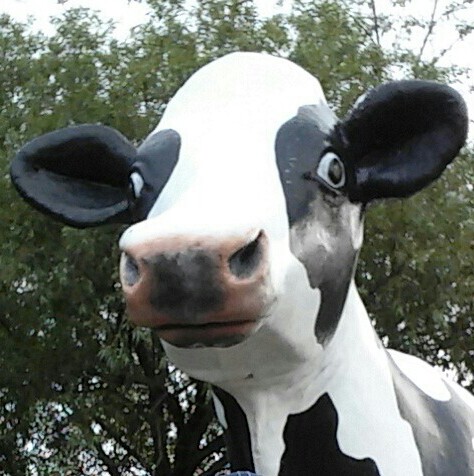If brown is actually a darker shade of orange (Wikipedia), then how do we get light brown and not orange?
How is it possible to be light and a “darker shade” at the same time?
TLDW: Brown is orange. Its just a perception thing.
Believe it or not, I came to ask this right after this very video and confirming elsewhere.
The video, however, does not address this matter
I think he address it in the “context” part. It is a perception thing.
But there can be two shades of brown in the same context
If by “light brown” you mean like a tan or khaki color, it would have to do with saturation–that is, sort of “watering down” the color with some blue tones. Neutral colors like gray and brown typically have a mix of a wide variety of colors, gray being the “true” neutral and brown being a bit heavier on the red/yellow tones.
How is saturation different from brightness?
Is saturation representing the share of pure color (i.e. only reflecting a certain wavelength), and brightness representing the intensity of color light coming/reflecting to the eye?
In other words, brown differs from orange in brightness (i.e. the amount of light reflected), and light brown differs from dark brown by saturation (i.e. the share of that paint vs., say, white)?
So it’s actually light/dark orange, but the paint is made so that it only partially reflects orange, and we see it as brown?
But isn’t it the same as adding black? And if we do add black to orange and then white, we do not come back to original orange (since now it’s kinda orange+grey), but arrive at light brown?
Sorry for so many questions, trying to build intuitive understanding of the matter
No worries, color is complicated and fascinating!
“Brightness”, in my experience, generally refers to the amount of light reflected (or sent from the light source). It doesn’t directly affect the perceived hue, it’s just a measure of how much light there is. It’s hard to get an intuitive sense of brightness, because of how we perceive color.
Saturation refers to the “purity” of the color–that is, how much light it reflects of other wavelengths. Gray reflects visible light in equal proportions, which makes it the least saturated. A surface that reflects only a single wavelength would be considered fully saturated, and appear as a vibrant hue.
It might be more helpful to think about how our eyes receive different wavelengths. There are three colors we perceive: red, green, and blue. The closer the reflected wavelength is to these colors, the more those “sensors” in our eyes are activated. So for example, yellow activates the red and green sensors about the same amount (and less than pure red or pure green), so we perceive yellow. Orange is mostly the red sensors, with a little bit of green activated as well.
We perceive brown when the blue sensor is also activated by some amount, because brown reflects a little bit of blue light (as opposed to “pure” orange, which wouldn’t have any blue light reflected). The lightness/darkness of the color is mostly the overall amount of light reflected (the brightness), but the big difference in what we perceive is that little extra blue light that brown reflects, that orange doesn’t.
Brown is still considered “dark orange” because the primary wavelength that it reflects is an orange color. And dark browns don’t need to reflect any blue light to be considered brown. But lighter brown shades will reflect a greater proportion of blue light than “light orange” would at the same brightness.
Thanks!
That’s a good explainer :)
To get some intuition around saturation and lightness, try out a color wheel. Start with a color like #A68768 and then play around with the saturation level (labeled “S” in “HSL”). Have fun!
Thanks!
Different words for the same or similar colors.
Starting with fully saturated orange at 50% lightness, you can decrease the lightness to zero. Along that path you will first encounter colors that could be called “light brown” or also “dark orange” (e.g., around 30% lightness). If you keep decreasing the brightness you will encounter what is typically referred to as “brown” (40%) and later on “dark brown” (15%). You could also call these later colors “dark dark orange”, but nobody does.
The names of these colors are determined by convention, perception, and context. There may be multiple common names for the same color value.
Thank you, will try!
If brown is dark orange and orange is red+yellow, the difference probably has to do with the amount of red in the particular shade.
It’s really hard to say without reference colors to see what you’re thinking of when you say “light brown”
Something like this:

Context is important. Remember the dress?
We can put two different browns in the same context and they will be different though
Because colors are more nuanced than that
Could you please elaborate?
Does it have something to do with brightness vs saturation?

